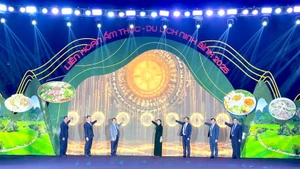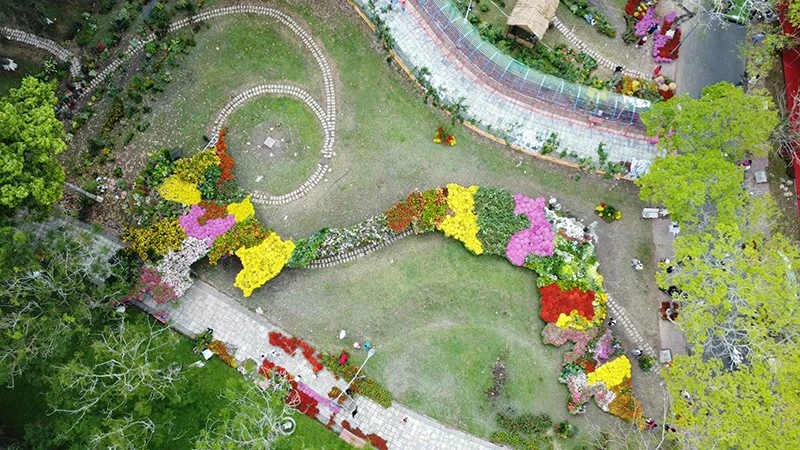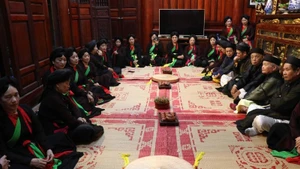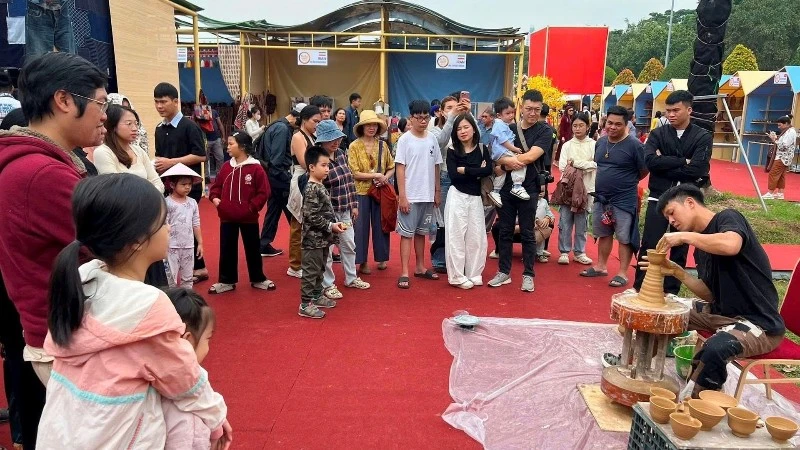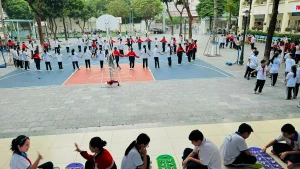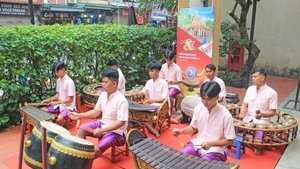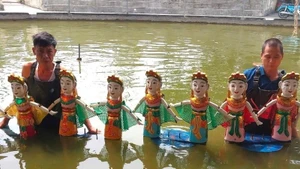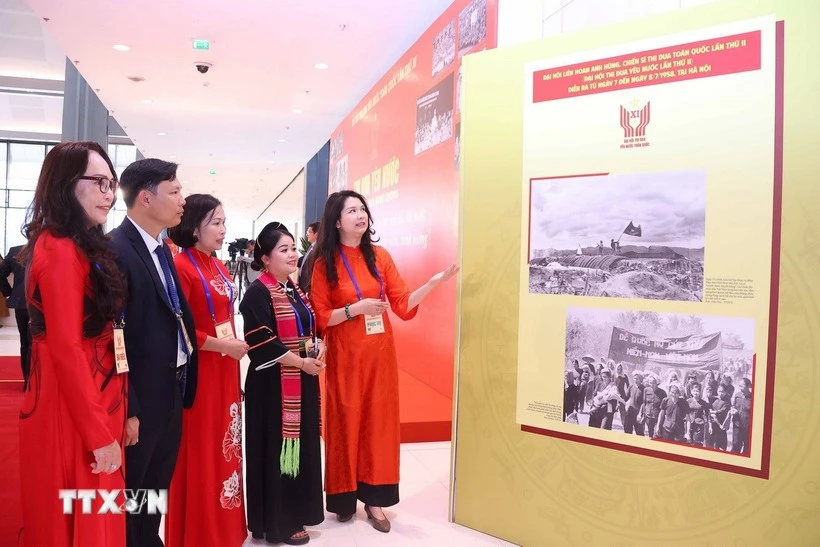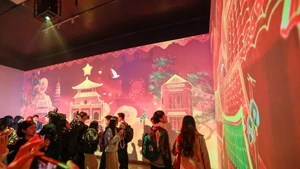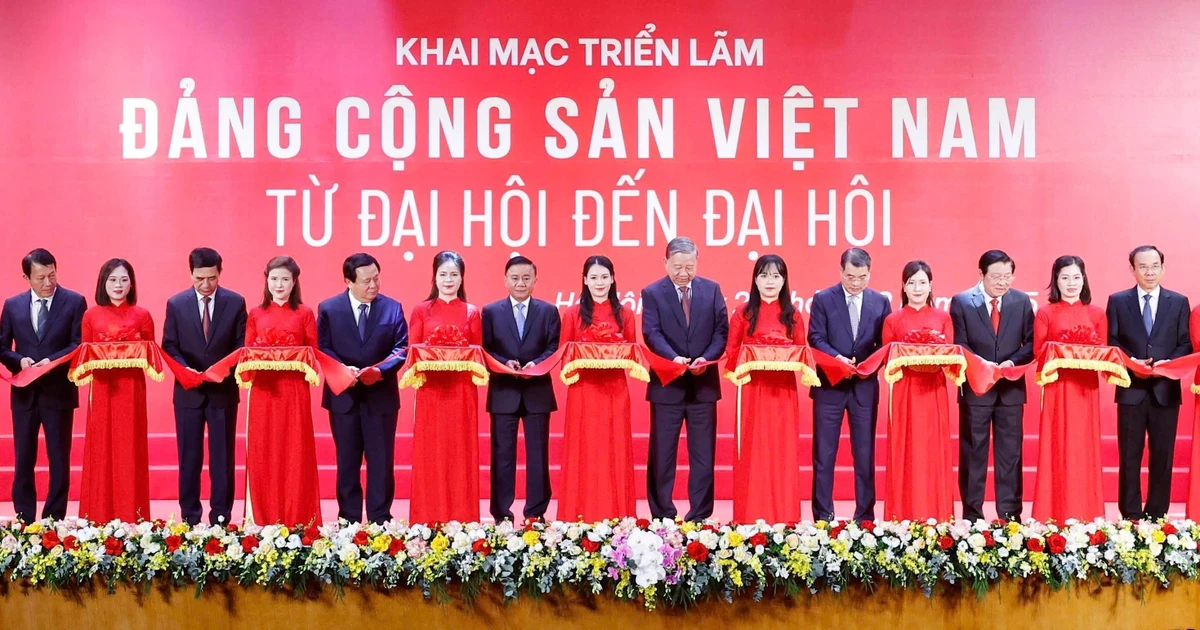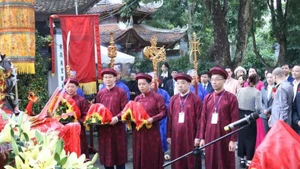Combining the display of photos with short film screenings and an impressive setting, the exhibition provides visitors with a multi-dimensional perspective on the hardships and the thoughts of female migrant workers from various localities who have come to Hanoi.
The exhibition is the result of a study on 20 women, aged between 16 and 34, who left their homes in poor rural areas or mountainous regions across the country, such as Son La, Cao Bang, Phu Tho, Thanh Hoa, and Ha Tinh, in search of a better future.
In Hanoi, they work in various occupations, such as street vendors, shoe shiners, street photographers, and hairdressers.
Under the study, which was jointly carried out by the Vietnam Women's Museum, Hanoi University of Civil Engineering, and the Vietnam Social Sciences Academy, the 20 participants were interviewed, photographed, and invited to the exhibition to share their thoughts and feelings.
The exhibition is divided into three spaces depicting their journeys: Where I Left, Where I Arrive, and Where I am.
The first part introduces their homeland as well as the reasons why they left for Hanoi, such as earning money to treat their sick parents or following their husband to work in the city.
 |
| At the opening ceremony |
Among them, Truong Thi Hoai Suong, 16, from Ha Tinh Province is the youngest female migrant worker. She had to drop out of school and went to Hanoi to earn money to help her family with its financial trouble.
Themed ‘Where I Arrive’, the second part reflects the life of female migrant workers in Hanoi as well as difficulties and disadvantages facing them. An installation space was set up at the exhibition to introduce a typical motel room where such migrants often choose to rent: mostly cramped, dark, unfurnished, and with a price as cheap as possible.
Another space simulates the sidewalks of the Hanoi Old Quarter, where every day the women work to polish people’s shoes, sell goods, or collect scraps.
The third part, named’ Where I Am’, sends a message about their dreams in the journey to adapt to urban life. Most of the migrant women share simple wishes of receiving sympathy and respect from the community, and getting access to free public spaces to take a rest and enjoy entertainment.
Present and interacting with viewers at the opening ceremony of the exhibition, Le Thi Hoa, a street vendor from Thanh Hoa Province, could not hide her emotions at the opportunity to be heard by many people.
Selling donuts in the streets, Hoa gets up at 3:30 AM to make cakes, then sells them across the streets of Hanoi until late at night. She walks an estimated distance of 30 to 40km every day, regardless if it’s a rainy or sunny day.
During her work, she can only rest in public spaces such as flower gardens, lakeside benches, and communal courtyards.
Hoan Kiem Lake, a typical public space of Hanoi, and its surrounding area is the common working place of most of female migrant workers.
Le Quang Binh, Director of ECUE Social Enterprise and Coordinator of the Liveable Hanoi Network emphasised that for city dwellers, public spaces are just places for fun, dating, and doing physical exercise; however, for migrant workers, they are also places to rest during long days of making a living.
Binh and his company mobilised locals and authorities of the Resident area No. 16 in Phuc Tan Ward, Hoan Kiem District, to turn a garbage dump into a playground, after realising that the area has a lot of migrant workers, including women and children.
According to a report at a conference on migrant women, which was organised by the Vietnam Women's Union in 2022, in addition to increasing income and receiving vocational training, migrant women also want to have their living environments improved, including public spaces.
The 20 women in the exhibition ‘Where I Arrive’ represents only a small group of the female migrant workforce, but their common voice raises an issue of social concern.
That is to increase equal opportunities and meet the needs of cultural enjoyment for the group of people who are considered disadvantaged in big cities today.
 |
| A visitor taking photo at the exhibition (Photo: cand.com.vn) |
“Migrant women are a very important labour force contributing to the economic development of cities and industrial zones,” said Vice President of the Vietnam Women's Union Nguyen Thi Minh Huong.
However, compared to men, they are facing greater challenges and barriers, both in terms of work and family life, she noted.
She also cited a notable figure that women account for 55.5% of migrants, according to the results of the 2019 Census. Specifically in Hanoi, there are 32 wards and communes where at least three out of ten people are immigrants.
The exhibition ‘Where I Arrive’ suggested several practical solutions to improve the quality of life for female migrant workers, as well as helping the public get a better understanding and appreciation for them.

